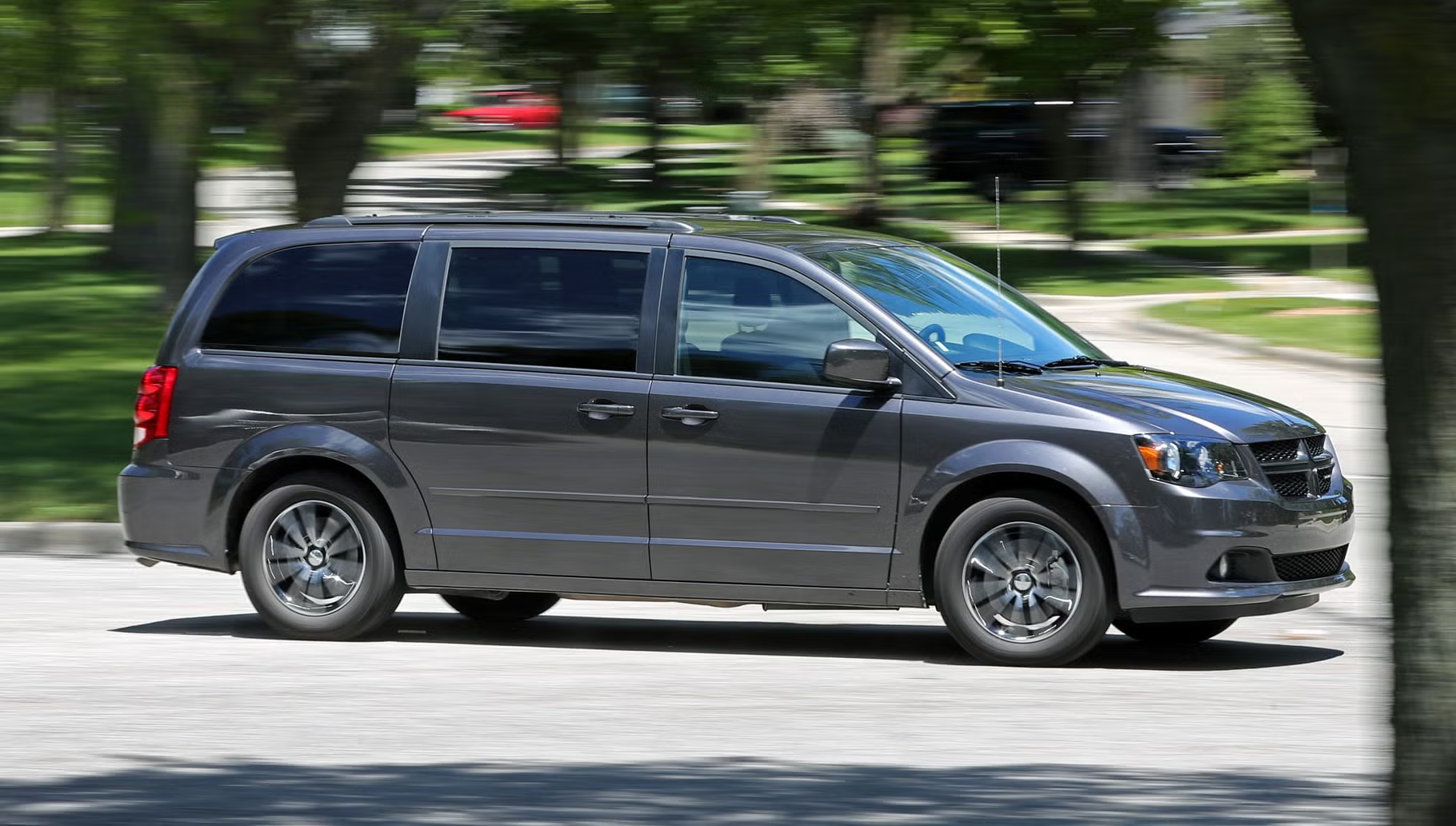For families, choosing the right vehicle is about much more than just transportation; it’s about safety, comfort, reliability, and managing a budget that can sometimes feel stretched thin. Among the various vehicle options available, minivans have long been the quintessential family haulers.
Their roomy interiors, flexible seating arrangements, and practical features have made them a staple for parents juggling multiple children, extracurricular activities, grocery runs, and weekend road trips. However, when purchasing a used minivan, the decision-making process becomes much more complex than simply picking a popular model off the lot.
The used vehicle market is rife with choices that vary widely in reliability, maintenance costs, fuel economy, and overall ownership experience. What looks like a great deal initially can quickly turn into an expensive and frustrating financial sinkhole if the vehicle suffers from chronic issues or high repair costs.
The minivan market, historically dominated by a few key players, offers a wide spectrum of vehicles that cater to different family needs and budgets. Japanese manufacturers like Toyota and Honda have built a strong reputation for crafting reliable, long-lasting minivans, while American and Korean brands offer competitive pricing and attractive features but often at the risk of higher maintenance expenses.
When families are on a limited budget but need to accommodate multiple passengers, the pressure to find a minivan that balances affordability with dependability is intense. Purchasing a used minivan without thoroughly understanding its strengths and weaknesses can lead to costly surprises, not only draining financial resources but also causing disruption to family routines.
Reliability is a cornerstone for families who depend on their vehicles for daily transportation. Minivans are often the lifeline connecting children to schools, parents to work, and the entire family to social and recreational activities. When a minivan breaks down or requires expensive repairs, it doesn’t just inconvenience the driver—it can throw the entire household into disarray.
Therefore, knowing which used minivans have stood the test of time and which ones tend to become money pits is crucial for making an informed decision. Some models have earned accolades for their robust engineering, longevity, and low cost of ownership, while others have developed reputations for frequent breakdowns, expensive parts, and problematic mechanical systems.
This article aims to provide a comprehensive overview of both ends of the spectrum: five reliable used minivans that big families can trust and five used minivans that often turn into financial sinkholes.
By exploring the strengths and weaknesses of these models, we hope to empower families with the knowledge needed to avoid costly mistakes and choose a vehicle that meets their practical needs and budget constraints. From engine durability and transmission reliability to fuel efficiency and safety features, this guide highlights what matters most when selecting a used family minivan.
Beyond mechanical reliability, considerations like interior space, comfort, and user-friendly features also play an essential role in the overall family vehicle experience. Minivans that provide flexible seating arrangements, easy access through sliding doors, ample storage compartments, and modern safety technology significantly enhance daily usability and peace of mind.
Additionally, some vehicles stand out for their ability to retain value over time, which can be a vital factor for families planning to eventually upgrade or trade in their minivan. Conversely, some models lose value rapidly, exacerbating the financial strain when it comes time to sell.
Fuel economy is another critical factor for large families who often cover extensive miles throughout the week. Minivans with inefficient engines not only burden owners at the gas pump but also contribute to increased environmental impact—a consideration increasingly important to many parents.
Furthermore, the availability of parts and service centers influences repair turnaround times and costs, adding yet another layer to the decision-making process.
In summary, choosing a used minivan requires careful consideration of numerous factors that affect both the short-term and long-term ownership experience. Families must weigh upfront purchase prices against the vehicle’s overall reliability, safety, maintenance costs, and practicality.
This article’s deep dive into reliable minivans and financial sinkholes will help families navigate this complex landscape, ensuring their next used minivan is a source of comfort and convenience rather than stress and financial strain.
Also Read: Top 10 Long-Lasting Cars That Get Over 30 MPG
5 Reliable Used Minivans for Big Families
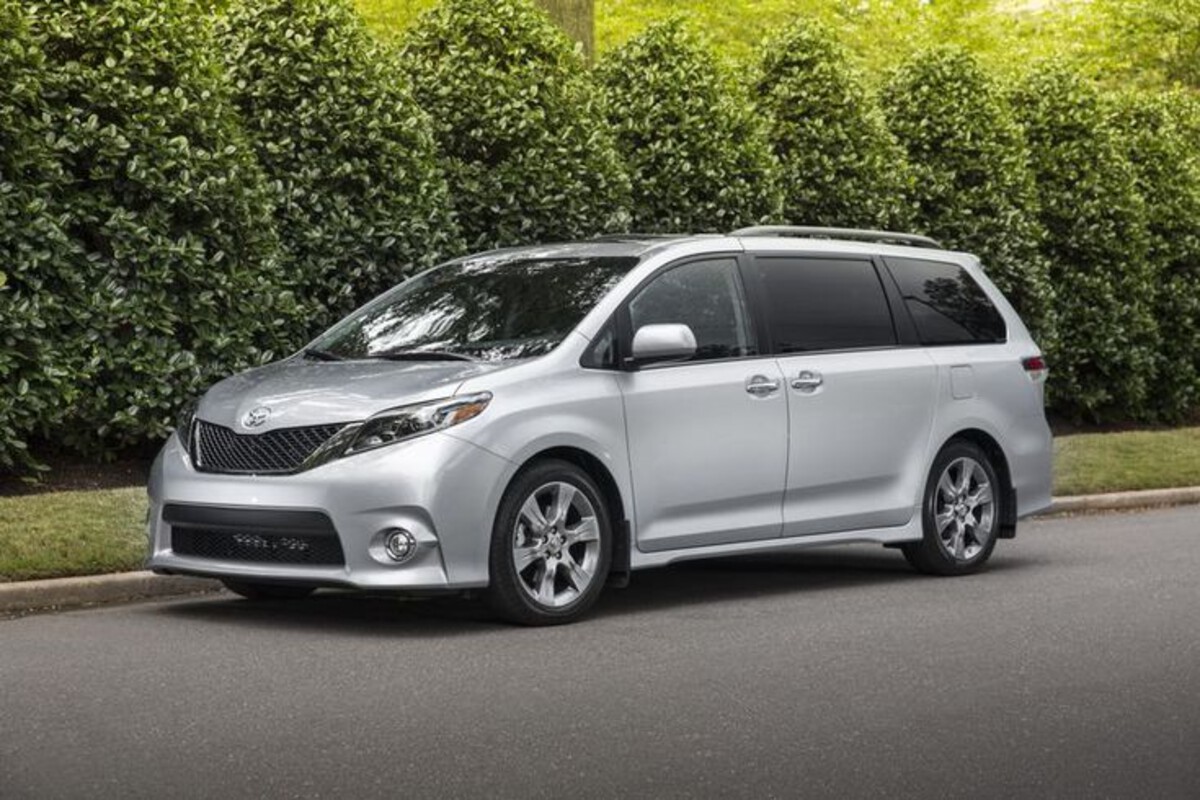
1. Toyota Sienna (2011-2017 Models)
The Toyota Sienna’s reputation as one of the most reliable family minivans in the market is well deserved, especially for models produced between 2011 and 2017.
This generation of the Sienna refined many aspects that made Toyota a household name in dependability. With a robust 3.5-liter V6 engine delivering a healthy balance of power and efficiency, the Sienna can comfortably handle the demands of hauling large families and their gear.
Unlike many minivans in its class, the Sienna offers all-wheel drive, a notable feature that sets it apart and makes it particularly appealing in regions with harsh weather or challenging road conditions. This capability adds an extra layer of safety and confidence for families who want secure transportation in snow or rain without sacrificing interior space or comfort.
Inside, the Sienna’s cabin is thoughtfully designed to accommodate up to eight passengers, with multiple seating configurations that make loading and unloading children easier. Toyota’s engineering focus on ergonomics ensures that controls are intuitive, and the interior materials are durable, withstanding years of wear and tear from active family life.
Safety has always been a cornerstone of the Sienna’s appeal, with advanced features like stability control, multiple airbags, and strong crash-test ratings from both IIHS and NHTSA providing reassurance to parents.
The 2011-2017 models also began integrating modern technologies such as rearview cameras, Bluetooth connectivity, and available navigation systems, which added convenience without complicating the driving experience.
From a maintenance perspective, the Toyota Sienna benefits from Toyota’s extensive dealer and service network, making replacement parts widely available and affordable compared to less popular models.
The V6 engine and transmission are known for their longevity, often exceeding 200,000 miles with routine care, which is a significant consideration for families planning to use their vehicle for many years.
Fuel economy is competitive for a minivan of its size, typically averaging around 18-20 miles per gallon, helping to reduce long-term running costs.
Owners often praise the Sienna for its quiet ride, reliability, and overall value retention, making it a favorite in the used vehicle market. For families who want a combination of durability, versatility, and comfort, the Toyota Sienna remains a top recommendation.
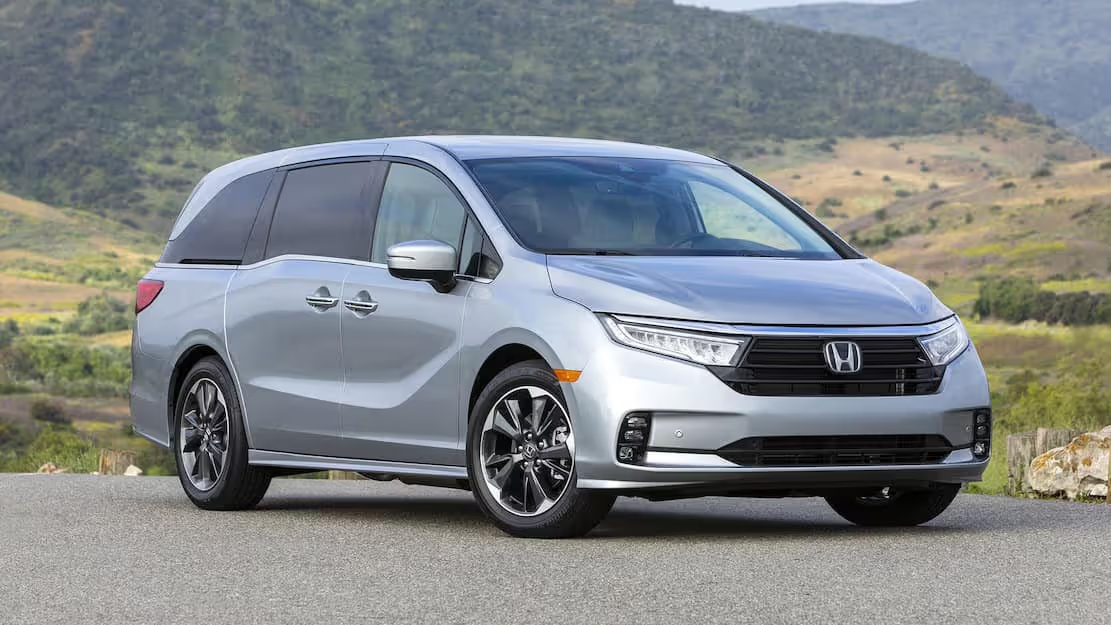
2. Honda Odyssey (2011-2017 Models)
The Honda Odyssey stands as one of the most well-rounded family minivans in the used market, offering a compelling blend of reliability, performance, and family-centric innovation. The 2011 to 2017 model years saw Honda refining the Odyssey into a vehicle that was as enjoyable to drive as it was practical.
Powered by a 3.5-liter V6 engine known for its smooth operation and solid durability, the Odyssey provides enough power to merge onto highways confidently, haul full passenger loads, and even tow moderate trailers when necessary. The transmission system paired with this engine is celebrated for its reliability, seldom causing issues when routine maintenance is followed.
One of the Odyssey’s standout features is its emphasis on driver comfort and engagement. Unlike many minivans that feel cumbersome, the Odyssey is often praised for its car-like handling, responsive steering, and composed ride quality. This makes daily driving less of a chore, whether navigating busy city streets or embarking on family road trips.
Inside, the Odyssey is spacious, with three rows of seating that accommodate up to eight passengers, and flexible seating options that include fold-flat seats to maximize cargo space when needed. Honda also prioritized noise reduction, resulting in a quieter cabin that helps keep conversations and entertainment clear even on longer drives.
Safety has always been a top priority for the Odyssey, with standard features including multiple airbags, anti-lock brakes, traction control, and electronic stability control. Many models within this range also offer advanced safety options like rearview cameras and parking sensors, improving maneuverability and reducing the risk of accidents in tight spaces.
The Odyssey’s interior is equally family-friendly, featuring abundant storage compartments, rear-seat entertainment systems, and tri-zone climate control to keep all passengers comfortable regardless of the weather outside.
From an ownership cost standpoint, the Odyssey is known for its reasonable maintenance expenses and strong resale value. The engine and transmission have proven longevity, and common repairs tend to be straightforward and affordable.
Fuel efficiency hovers around 19-22 miles per gallon, depending on driving conditions, which is respectable for a vehicle of its size and capability. For families seeking a reliable, versatile minivan with a reputation for long-term dependability and a comfortable driving experience, the Honda Odyssey remains a clear frontrunner.
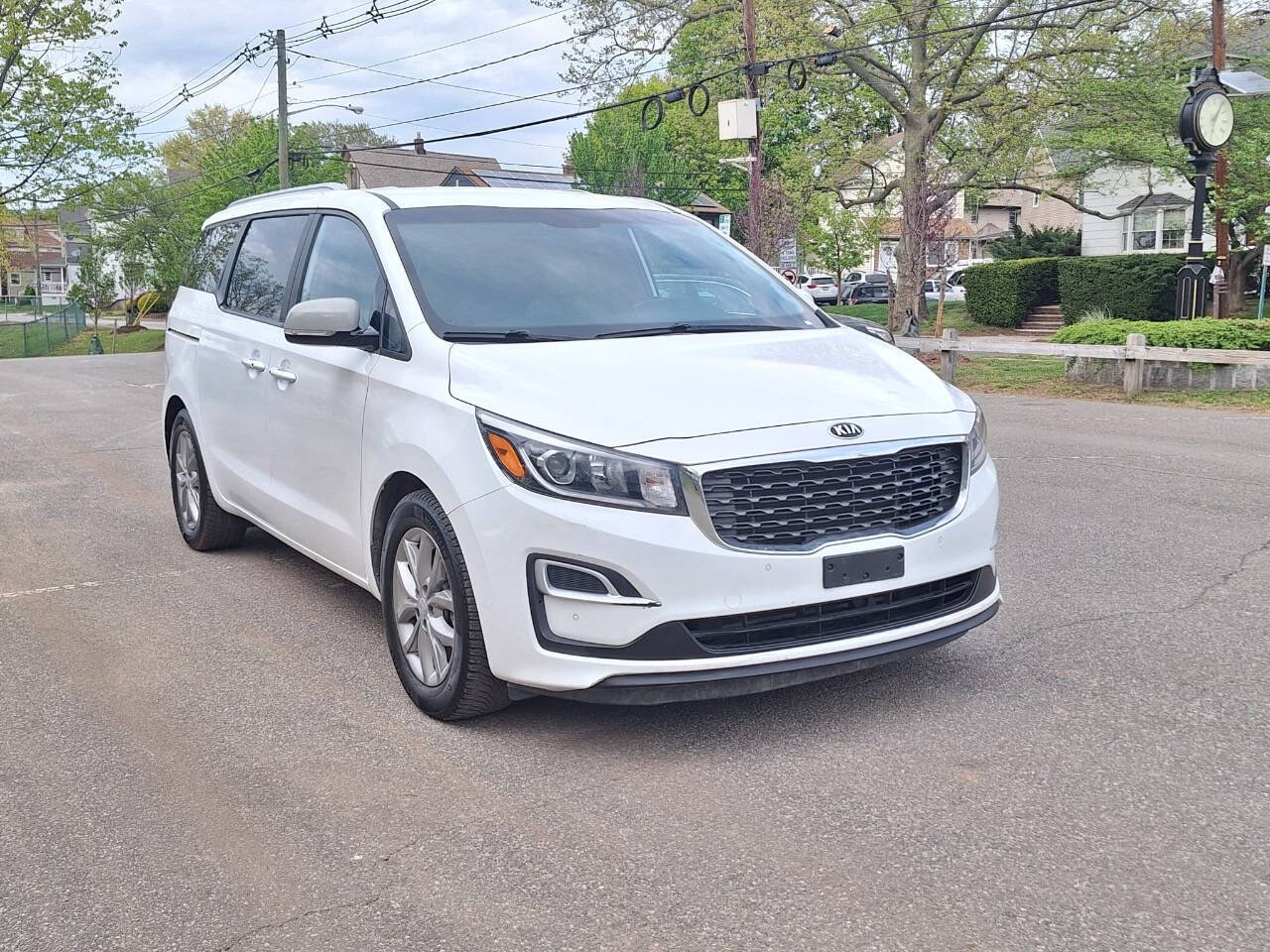
3. Kia Sedona (2015-2019 Models)
In recent years, the Kia Sedona has emerged as a surprisingly strong contender in the family minivan segment, especially among used vehicles from 2015 to 2019.
Once overlooked in favor of Japanese competitors, Kia’s commitment to quality improvements and competitive pricing has elevated the Sedona’s status in the eyes of families looking for reliability and modern features at an affordable cost.
The Sedona’s 3.3-liter V6 engine delivers ample power for everyday driving and highway cruising, paired with a six-speed automatic transmission designed to provide smooth shifts and long-term durability when serviced regularly.
One of the Sedona’s major appeals lies in its extensive list of standard and available features that cater to family needs. This includes advanced safety technologies such as blind-spot monitoring, rear cross-traffic alert, lane departure warning, and forward collision warning systems often reserved for higher-priced vehicles.
Its roomy interior accommodates up to seven or eight passengers comfortably, with second-row captain’s chairs or bench seating options depending on the trim.
The cabin materials and design show clear improvements over earlier Kia minivans, with soft-touch surfaces and user-friendly controls enhancing the overall experience. Families appreciate the ample cupholders, USB ports, and versatile storage spaces that help keep the interior organized during busy daily routines.
While the Sedona’s fuel economy is average for the minivan class, it remains competitive at around 18-20 miles per gallon combined. More importantly, Kia’s excellent warranty coverage often still applies to used models purchased within certain mileage and age limits, providing extra reassurance for buyers concerned about unexpected repair costs.
The Sedona’s maintenance costs tend to be reasonable, and many owners report good reliability when adhering to scheduled service intervals. Additionally, the resale value for the Sedona has improved thanks to the brand’s growing reputation for quality and durability.
For families balancing tight budgets with the desire for a feature-rich, reliable minivan, the Kia Sedona offers a compelling package. It represents a smart compromise between affordability and modern comforts, without sacrificing the dependability essential for big-family transportation. As Kia continues to gain trust, the Sedona stands out as a used minivan that punches well above its weight class in terms of value and reliability.
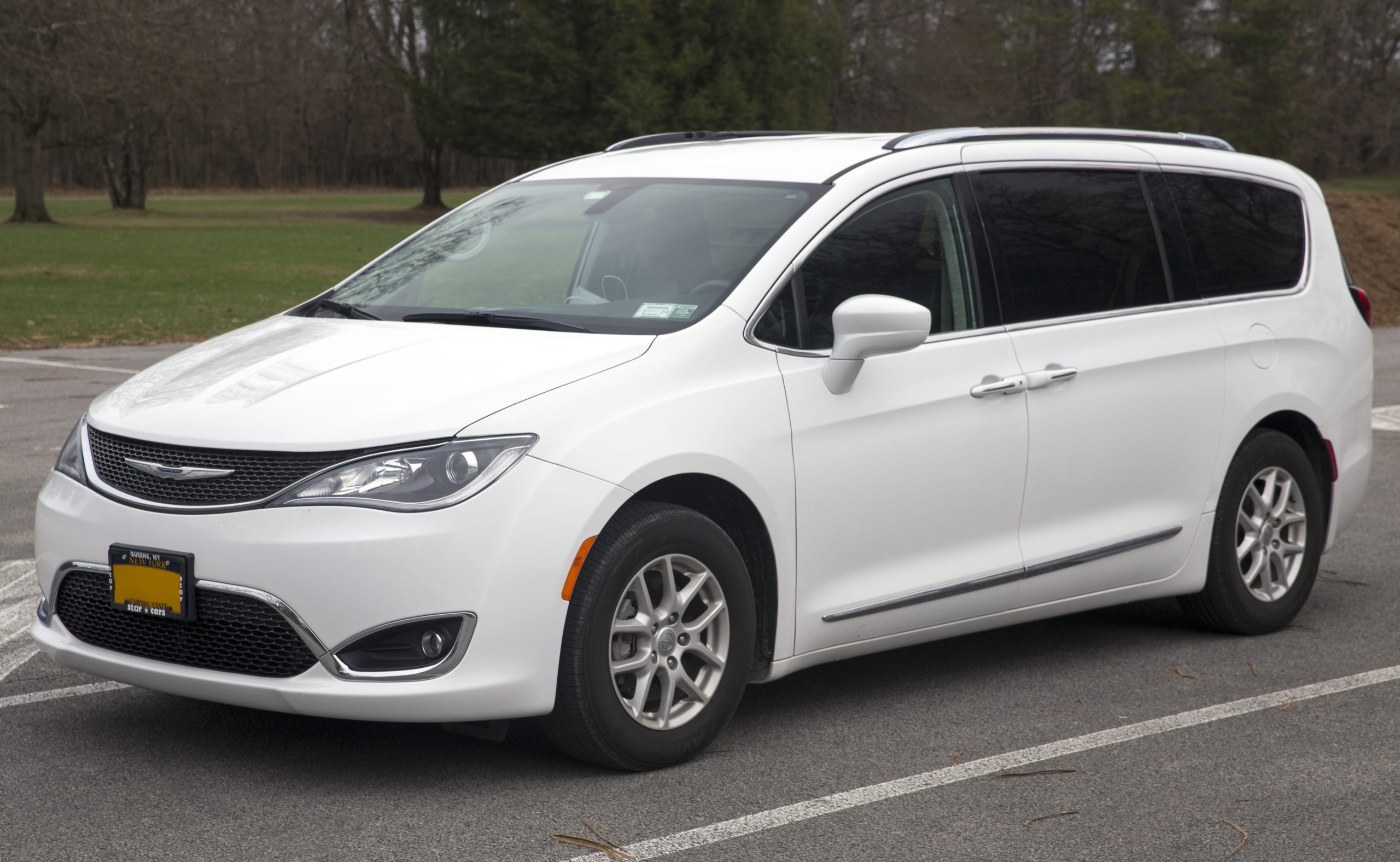
4. Chrysler Pacifica (2017-2019 Models)
The Chrysler Pacifica, introduced in 2017 as the successor to the Town & Country, represents a bold step forward for minivan innovation, combining modern design, family-friendly features, and a more refined driving experience.
Though Chrysler’s previous minivan offerings suffered from mixed reliability reputations, the Pacifica’s fresh engineering and advanced technology have significantly improved its standing in the used vehicle market.
The Pacifica is powered by a 3.6-liter V6 engine coupled with a nine-speed automatic transmission, designed to deliver smooth power delivery and efficient fuel consumption. This powertrain strikes a nice balance between performance and economy, offering enough muscle to handle full passenger loads and cargo with ease.
The interior of the Pacifica is spacious and versatile, with seating for up to seven or eight passengers, depending on configuration. Chrysler’s Stow ’n Go seating system remains a highlight, allowing the second and third-row seats to fold flat into the floor to create a cavernous cargo area when needed.
This innovative feature provides tremendous flexibility for families who need to transport everything from sports equipment to grocery hauls without sacrificing passenger comfort.
The cabin is loaded with technology as well, including a user-friendly infotainment system, multiple USB charging ports, and available rear-seat entertainment systems that keep kids occupied during long trips.
Safety is a strong point for the Pacifica, with a suite of advanced driver assistance features such as adaptive cruise control, lane keep assist, blind-spot monitoring, and automatic emergency braking offered on many trims. The minivan also earns solid crash test scores, enhancing its appeal for cautious parents.
While Chrysler’s maintenance and repair costs tend to be higher than Japanese rivals, many owners feel the Pacifica’s improved reliability and comfort justify the investment. Warranty coverage and certified pre-owned programs can also help mitigate some of the ownership risks associated with Chrysler vehicles.
In summary, the Chrysler Pacifica offers a modern, comfortable, and versatile option for families looking to upgrade from older minivans. Its blend of innovative features and improved reliability make it a noteworthy choice for big families who want a spacious, well-equipped vehicle without giving up on dependability.
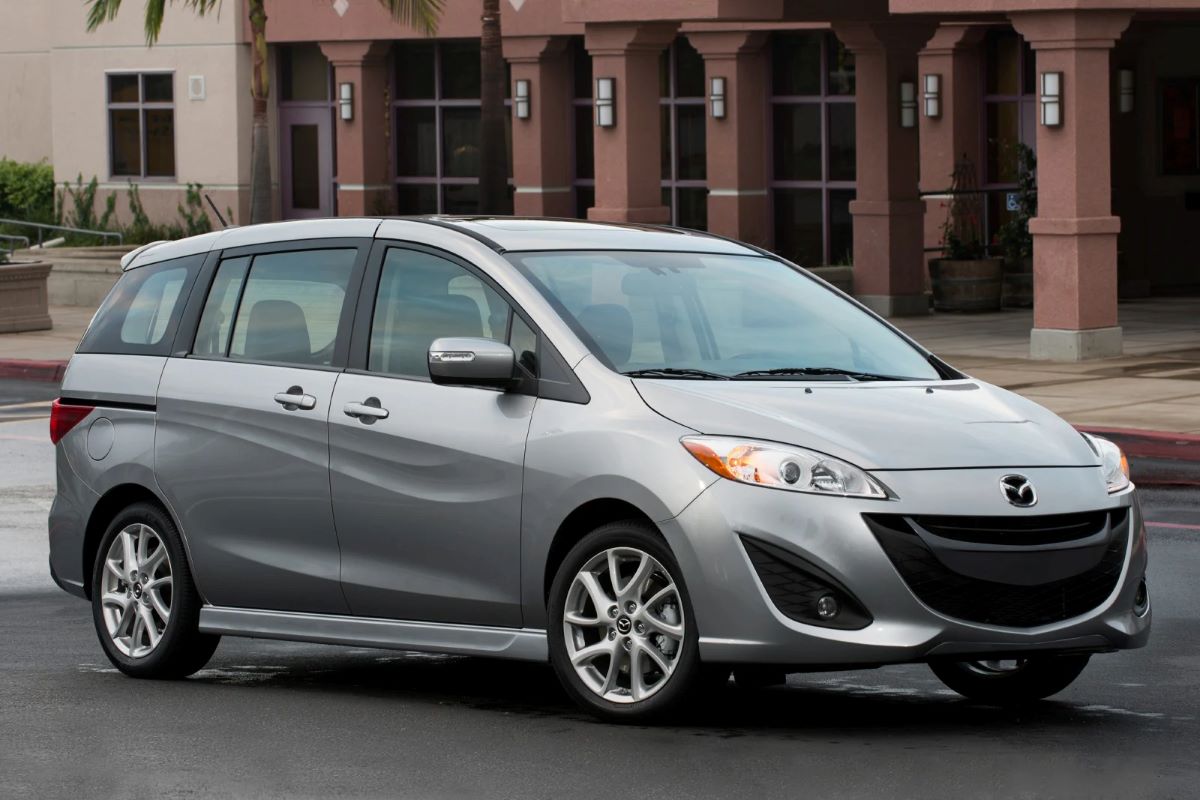
5. Mazda5 (2012-2015 Models)
Though smaller than traditional minivans, the Mazda5 offers an intriguing alternative for families seeking a reliable and economical people-mover with a bit more agility and efficiency. Produced in North America until 2015, the Mazda5 seats six passengers and provides the convenience of sliding rear doors—a rarity in compact vehicles.
Powered by a 2.5-liter four-cylinder engine, the Mazda5 delivers respectable performance while maintaining excellent fuel efficiency, often achieving upwards of 21-25 miles per gallon, depending on driving conditions. This balance of power and economy makes it appealing for families who don’t require the bulk of a full-size minivan but still need extra space for children and cargo.
The Mazda5 is often praised for its sporty handling and responsive steering, qualities uncommon in the minivan category. It drives more like a compact car, which can be a blessing in urban settings where parking and maneuvering larger vehicles can be a challenge.
Despite its smaller footprint, the interior is cleverly designed to maximize space and comfort, with three rows of seats that fold flat to provide a flexible cargo area. Parents appreciate the sliding rear doors that ease access in tight parking spots and the thoughtfully designed cabin with quality materials for its class.
Reliability for the 2012-2015 Mazda5 models is generally strong, with the four-cylinder engine and automatic transmissions showing good longevity when owners adhere to recommended maintenance schedules. Repair and maintenance costs tend to be lower than larger minivans, making it an economical choice for budget-conscious families.
Safety features include multiple airbags, stability control, and anti-lock brakes, which contribute to respectable crash test scores and overall occupant protection. While the Mazda5 may lack some of the luxury and expansive space of its bigger siblings, it offers a compelling package for smaller families or those who prioritize efficiency without sacrificing essential minivan practicality.
In conclusion, the Mazda5 is a unique choice that blends reliability, fuel efficiency, and maneuverability into a compact minivan form. It serves families who need just enough space and value an engaging driving experience without the bulk or cost of a traditional minivan. For many, it represents an ideal middle ground—dependable, affordable, and family-friendly.
5 Used Minivans That Are Financial Sinkholes
While many used minivans serve families well over the years, others unfortunately become constant sources of expense and stress, earning reputations as financial sinkholes. These vehicles often come with underlying reliability problems that may not be obvious at the point of purchase, but soon surface in the form of frequent repairs, costly parts replacements, or persistent mechanical issues.
Add to that poor fuel economy, outdated or insufficient safety features, and higher maintenance costs, and the result is a vehicle that can quickly erode a family’s budget. For parents trying to juggle household expenses, education costs, and everyday living, falling into the trap of owning one of these problematic minivans can be a serious financial burden.
Below, we explore five used minivan models that commonly exhibit these costly traits and should be approached with caution by savvy buyers.
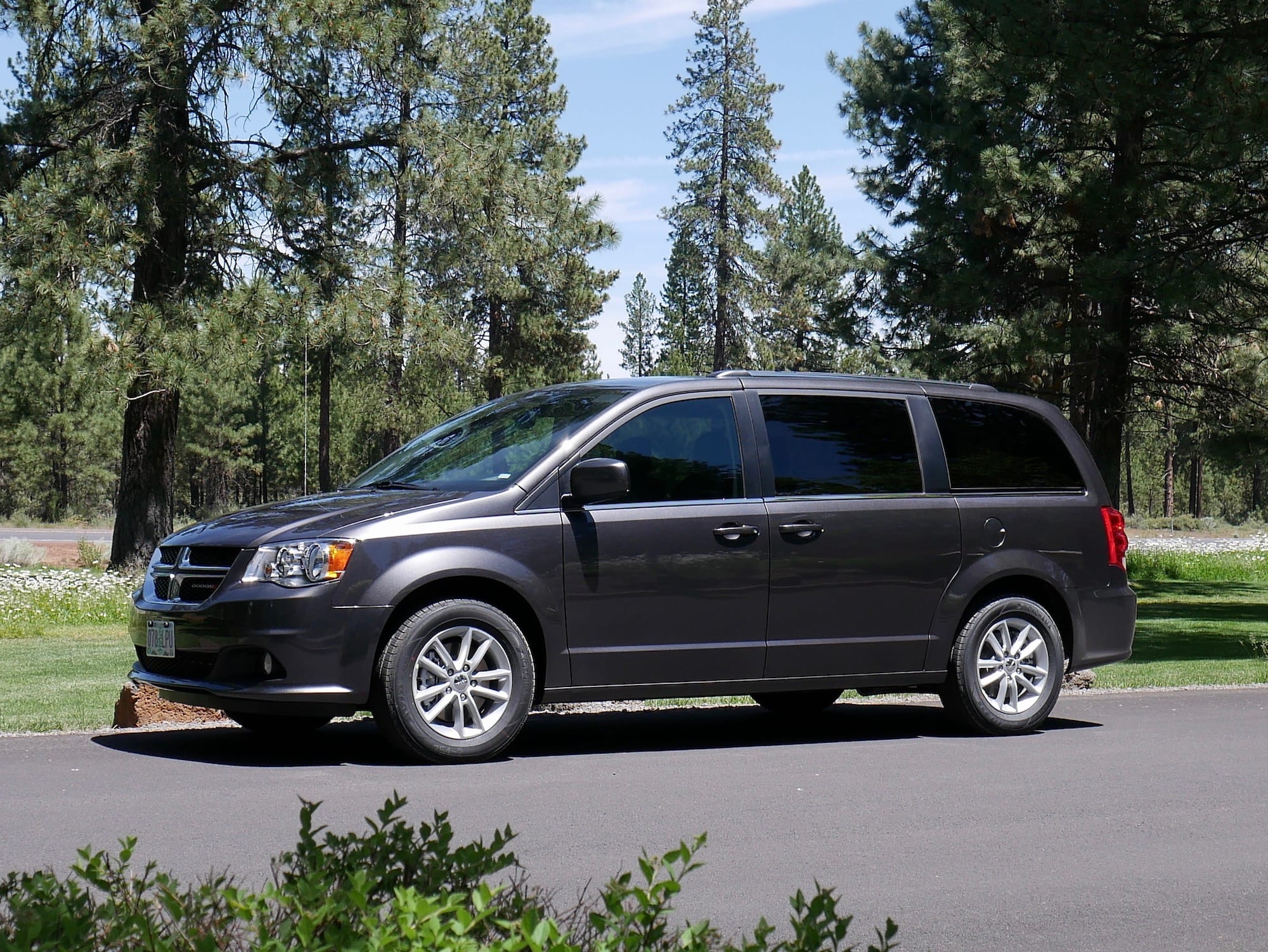
1. Dodge Grand Caravan (2011-2019 Models)
The Dodge Grand Caravan is one of the most recognizable names in the minivan segment, historically praised for its affordability and straightforward design. However, the models from 2011 through 2019 present numerous red flags that have contributed to their reputation as financial sinkholes.
Although the Grand Caravan’s price point is appealing to families on a budget, this often comes at the expense of long-term reliability and ownership costs. The 3.6-liter V6 engine used during these years has been plagued by issues ranging from premature engine wear to problematic transmission behavior.
Drivers frequently report jerky shifts, hesitation, or outright transmission failures, which are expensive to repair and often require replacement units. This problem alone has made some Grand Caravans a nightmare for owners, with repair bills sometimes rivaling or exceeding the vehicle’s market value.
Beyond mechanical troubles, the Dodge Grand Caravan’s fuel efficiency is notably poor, with many owners experiencing mileage figures in the mid to high teens, even under moderate driving conditions. This lack of fuel economy places extra strain on family budgets, particularly for large households with multiple drivers or those covering significant miles for school runs and extracurricular activities.
Safety features also lag behind competitors, with fewer advanced driver assistance systems available, particularly in earlier models. While basic safety scores may be acceptable, the lack of modern crash avoidance technology means parents may miss out on important protective features found in other minivans.
The interior quality and reliability of components such as power doors, window regulators, and infotainment systems also tend to deteriorate faster than expected, leading to frequent and costly repairs. Consumer complaints often include electrical glitches, door latch failures, and malfunctioning HVAC systems—all of which can quickly add up to a significant repair bill.
On top of that, the Dodge brand’s relatively weaker resale value means that owners often struggle to recoup their investment when selling or trading in the vehicle.
This combination of frequent, expensive repairs, poor fuel economy, and depreciated resale value makes the Dodge Grand Caravan a cautionary tale for families considering a used minivan purchase. While it may appear budget-friendly upfront, it often proves to be a costly financial sinkhole in the long run.
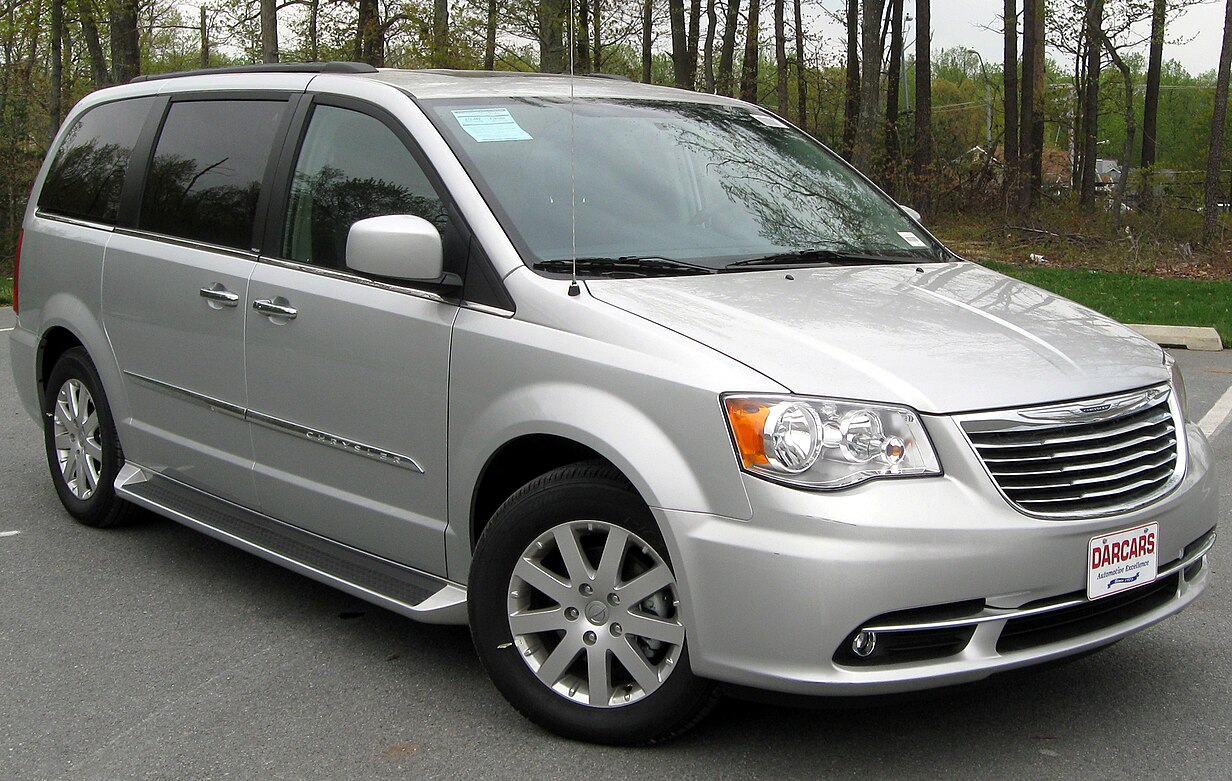
2. Chrysler Town & Country (2011-2016 Models)
Once a top contender in the family minivan category, the Chrysler Town & Country models from 2011 to 2016 have fallen out of favor due to persistent reliability concerns and maintenance woes. Despite being loaded with features that appeal to families, such as Stow ’n Go seating and premium interiors, the Town & Country’s mechanical reliability leaves much to be desired.
These models often suffer from chronic electrical issues that affect everything from power sliding doors to dashboard controls, creating ongoing headaches for owners. Such electrical gremlins can be notoriously difficult and expensive to diagnose and fix, sometimes requiring multiple trips to the repair shop.
Under the hood, the Town & Country uses Chrysler’s 3.6-liter Pentastar V6, a powertrain that has faced criticism for inconsistent reliability in this application. Transmission problems are common, including rough shifting, slipping, and even total failure in some cases.
Repairing or replacing transmissions in these minivans can easily cost several thousand dollars, a significant expense for many families. Suspension components, such as ball joints and control arms, have also been reported to wear prematurely, adding to maintenance costs and potentially impacting ride quality and safety.
Fuel economy is unimpressive, with Town & Country models frequently returning less than 18 miles per gallon in combined driving, a drawback when family budgets are tight and fuel prices fluctuate. Additionally, Chrysler’s repair costs tend to be higher than those of Japanese competitors due to parts prices and labor intensity.
Interior components also show signs of wear quickly, with frequent complaints about squeaks, rattles, and malfunctioning electronics detracting from what should be a premium family experience. All of these factors contribute to the Town & Country’s reputation as a financial sinkhole—one where high maintenance costs and frustrating reliability issues can overshadow the vehicle’s initial appeal.
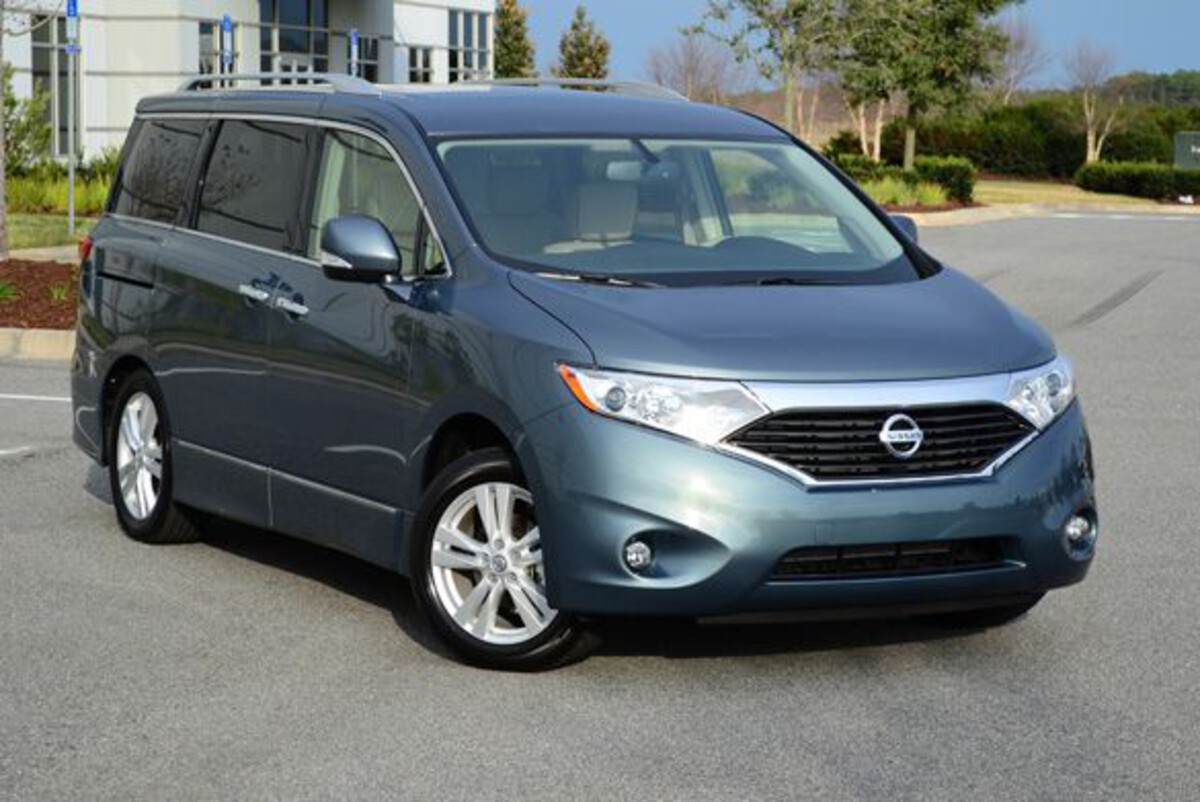
3. Nissan Quest (2011-2017 Models)
The Nissan Quest, especially models produced between 2011 and 2017, struggles in the used minivan market due to a combination of reliability issues and high ownership costs. Though the Quest offers unique styling and a comfortable ride, it falls short in critical areas that affect total cost of ownership.
One of the most glaring problems reported by owners is the Quest’s CVT (Continuously Variable Transmission), which can suffer from overheating, slipping, and eventual failure.
Unlike traditional automatics, CVT repairs are often costly and complex, and Nissan’s CVT warranty coverage has been a point of contention among consumers. Failure to address CVT issues promptly can lead to dangerous driving conditions or complete loss of mobility.
Beyond transmission woes, the Quest’s V6 engine has been noted to consume excessive oil and occasionally suffer from head gasket problems, leading to expensive engine repairs. The suspension and braking systems also require frequent attention, with some drivers reporting premature wear of brake pads and rotors, as well as noisy suspension components.
The interior, while roomy, has not aged well in terms of materials quality and electronics reliability. Infotainment glitches, malfunctioning climate controls, and door lock issues are common complaints that add to the Quest’s maintenance burden.
Fuel efficiency in the Quest is generally mediocre, with combined mileage figures around 17-19 miles per gallon, which can strain family budgets, especially in regions with high fuel prices.
Safety ratings have been average at best, and the Quest typically lacks many of the advanced driver assistance features that have become standard on more modern minivans, leaving families with fewer protective technologies.
Combined with its depreciating value and higher-than-average repair costs, the Nissan Quest becomes a less attractive option for those seeking a reliable used minivan. Families who overlook these issues may find themselves facing a financial sinkhole that erodes savings and creates stress.
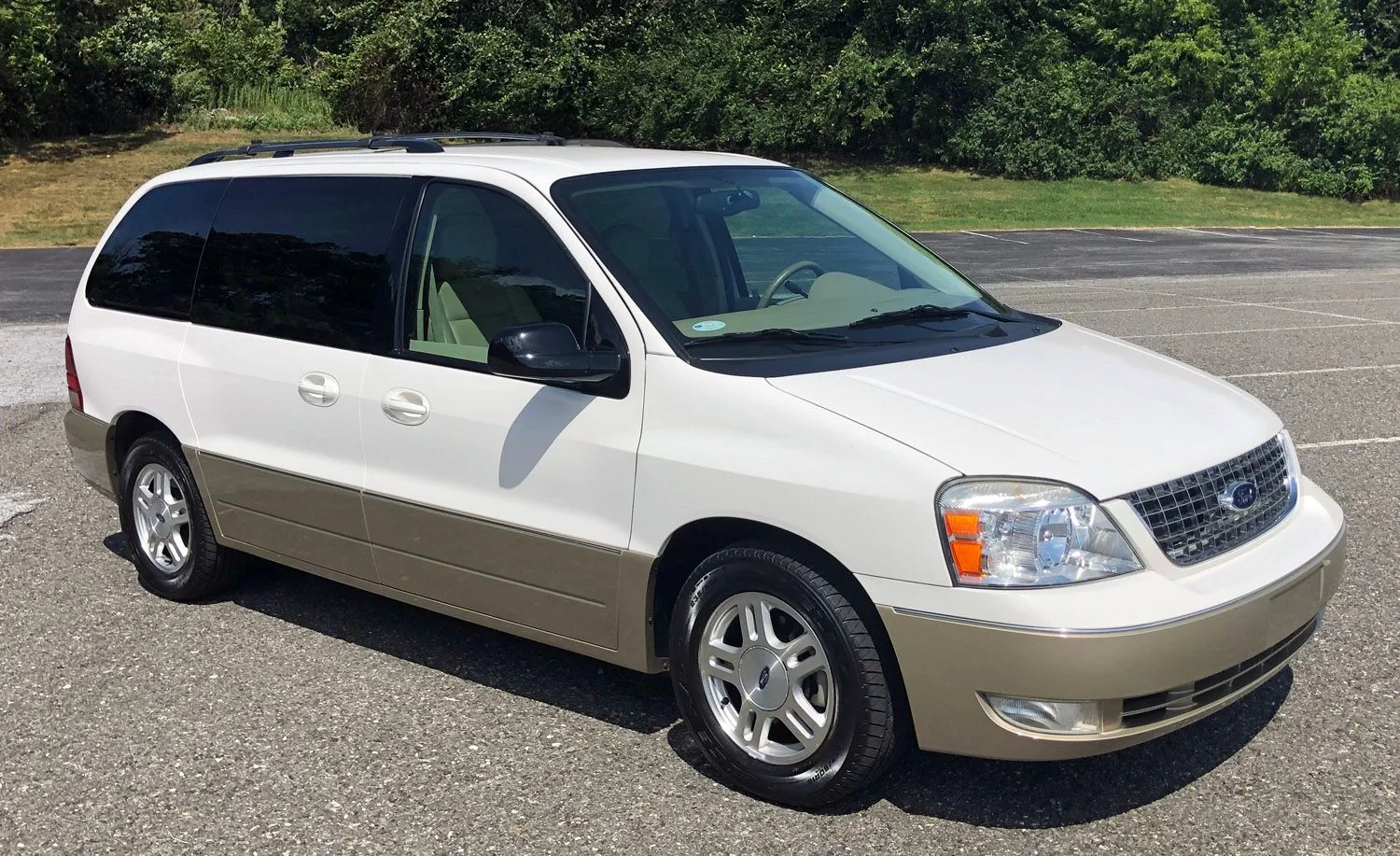
4. Ford Freestar (2004-2007 Models)
Though older than many minivans on this list, the Ford Freestar deserves mention as a financial sinkhole due to its history of poor reliability and escalating repair costs. The Freestar was Ford’s attempt to replace the Windstar and compete in the minivan market but fell short in key areas.
These models, particularly from 2004 to 2007, are known for mechanical weaknesses that often lead to costly repairs. The 3.9-liter V6 engine is prone to issues like overheating, intake manifold failures, and premature timing chain wear, all of which can cause engine damage and expensive replacements.
Transmission problems plague the Freestar as well, with many owners reporting erratic shifting, slipping, and failures requiring rebuilds or replacements. The four-speed automatic transmission commonly used in these models is outdated compared to competitors, leading to subpar fuel economy and driving dynamics.
Frequent brake system problems, suspension wear, and electrical gremlins further compound maintenance costs. The Freestar’s reliability ratings have historically been poor, with many owners expressing frustration at the frequency and expense of repairs.
Interior quality is another weak spot, with wear and tear showing quickly on seats, trim, and electronic components. The lack of modern safety features such as stability control and advanced airbags also makes it less appealing for today’s safety-conscious families.
While the initial purchase price for a used Freestar might be low, the ongoing maintenance and repair costs often erase any financial savings. Families that end up owning one frequently describe it as a “money pit,” where constant upkeep drains resources better spent elsewhere.
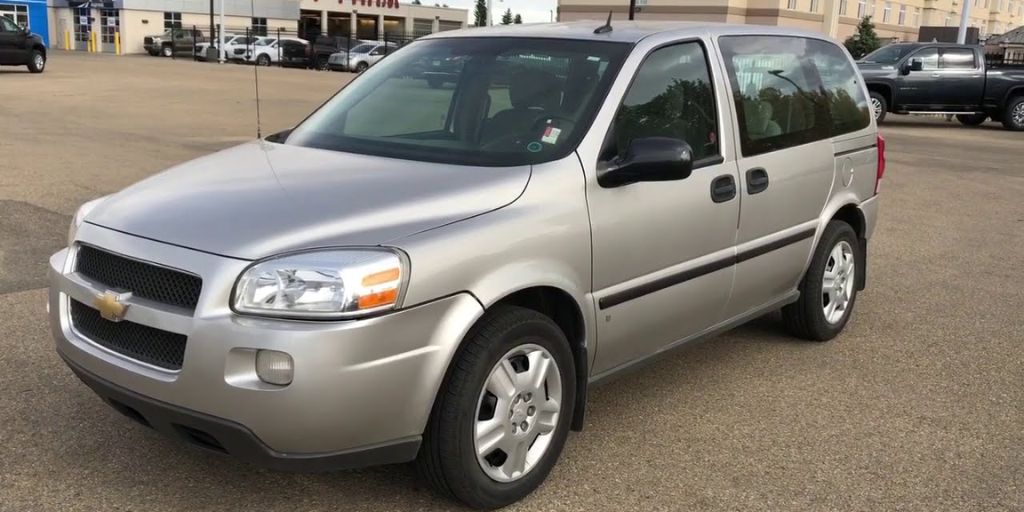
5. Chevrolet Uplander (2005-2008 Models)
The Chevrolet Uplander, sold from 2005 through 2008, is often cited as a vehicle to avoid in the used minivan market due to its combination of reliability woes and high ownership costs. Despite being marketed as a versatile family vehicle, the Uplander’s build quality and mechanical robustness leave much to be desired.
One of the most significant issues involves the 3.5-liter V6 engine, which has been known to develop serious problems such as head gasket failure and excessive oil consumption. Repairing these engine issues can be prohibitively expensive, and many owners face repeated visits to the mechanic for the same problems.
Transmission issues are also common, including slipping, delayed shifting, and in some cases, total failure that requires replacement. These problems are often exacerbated by the Uplander’s relatively heavy weight and outdated drivetrain components, which place extra strain on mechanical parts.
The suspension and brake systems also require frequent maintenance, with complaints of noisy components and premature wear adding to repair costs. Fuel economy is mediocre at best, averaging around 17 miles per gallon combined, which makes the Uplander expensive to operate for daily family driving.
Interior quality and electronics reliability are additional sources of frustration. Owners report problems with power door locks, failing infotainment systems, and poor HVAC performance, all of which diminish the vehicle’s appeal and increase the cost of ownership.
The Uplander’s safety features are basic by modern standards, with limited availability of advanced driver aids and moderate crash test ratings. Combined with poor resale value and high repair costs, the Chevrolet Uplander often becomes a financial drain for families seeking an affordable used minivan. Its hidden costs can easily outweigh any savings on purchase price, making it a poor investment for long-term family transportation.
ALSO READ: 5 American Cars That Are Surprisingly Reliable and 5 That Should Be Avoided at All Costs
Selecting the right used minivan is a pivotal decision for any big family, shaping their transportation experience for years to come. As we have explored throughout this article, the used minivan market presents a wide array of options that vary drastically in reliability, cost of ownership, and family-friendly features.
While some models rise to the challenge of serving large families with dependable performance, comfort, and safety, others unfortunately become financial burdens that chip away at household budgets and add undue stress to family life. This contrast underscores the importance of thorough research, careful inspection, and strategic purchasing decisions when entering the used minivan market.
Reliable used minivans such as the Toyota Sienna, Honda Odyssey, Kia Sedona, Chrysler Pacifica, and Mazda5 stand out for their track records of durability and practical design. These vehicles offer families peace of mind through solid engineering, well-maintained performance, and features tailored to meet the demands of transporting multiple passengers daily.
Their reputations are built on years of dependable operation, supported by relatively affordable maintenance costs and strong resale values. Families who prioritize safety, comfort, and longevity find that investing in these minivans can pay dividends through reduced repair expenses and a more enjoyable driving experience.
The availability of modern safety systems and versatile interiors further enhances their appeal, making them ideal candidates for large households seeking both functionality and value.
Conversely, the Dodge Grand Caravan, Chrysler Town & Country, Nissan Quest, Ford Freestar, and Chevrolet Uplander serve as cautionary examples of how seemingly affordable used minivans can quickly devolve into financial sinkholes. These models are often characterized by recurring mechanical issues such as transmission failures, engine troubles, and electrical problems that lead to frequent and costly repairs.
Coupled with subpar fuel efficiency, outdated safety features, and diminishing resale values, they pose significant risks to families already managing tight budgets. The true cost of ownership for these vehicles often surpasses initial purchase savings, leaving owners with an unexpected financial burden that could have been avoided with more careful selection.
For families relying on their minivan as a lifeline for daily activities, such unreliability can disrupt routines and erode confidence in their vehicle’s dependability.
What this analysis ultimately reveals is the critical importance of a holistic approach to buying a used minivan. Price should not be the sole factor guiding the decision; instead, families must consider the vehicle’s maintenance history, reputation for reliability, availability of parts and service, and alignment with their specific needs.
Test driving, obtaining detailed service records, and investing in pre-purchase inspections can help uncover potential issues before committing to a purchase. Moreover, understanding which models have historically performed well versus those prone to problems enables families to avoid common pitfalls.
The evolving automotive landscape continues to introduce new technologies and innovations into the minivan segment. Features such as adaptive cruise control, lane-keeping assist, blind-spot monitoring, and advanced infotainment systems have become more prevalent, enhancing safety and convenience for families.
While these technologies add upfront cost, their presence often correlates with newer, more reliable models that justify the investment through improved ownership satisfaction and reduced accident risks. Families should weigh these benefits alongside traditional concerns like engine and transmission durability to make the most informed choice possible.
In addition to mechanical and technological considerations, families must also evaluate their lifestyle needs when choosing a minivan. Factors like the number of passengers typically carried, the need for cargo space versus passenger comfort, climate conditions that might necessitate all-wheel drive, and local fuel costs all influence the ideal vehicle choice.
A minivan that fits perfectly for one family might not be the best option for another with different priorities. This personalized assessment, combined with knowledge of vehicle reliability and financial implications, is the best strategy for making a sound investment.
Ultimately, the goal for any family shopping for a used minivan should be to find a vehicle that blends reliability, safety, comfort, and affordability. It should serve as a trusted partner in everyday life, accommodating growing children, hauling groceries, navigating busy school runs, and making road trips enjoyable rather than stressful.
By steering clear of financial sinkholes and focusing on proven, dependable models, families can maximize the value of their investment and enjoy years of hassle-free motoring.
To summarize, the minivan segment offers a broad spectrum of choices, but not all used minivans are created equal. Armed with the insights provided here, families can confidently approach the used minivan market, knowing which models deliver value and which to avoid.
This knowledge empowers parents to make informed decisions that safeguard their finances while ensuring their family’s transportation needs are met with reliability and ease. The right used minivan is more than just a vehicle—it’s a cornerstone of family life, providing safety, space, and security through every mile traveled.

